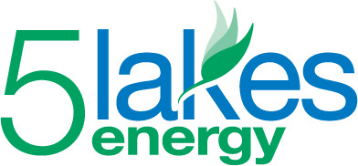5 Lakes Energy partner, Douglas Jester, spoke about time-of-use (TOU) rates this morning on a panel at the 2017 National Association of Regulatory Utility Commissioners (NARUC) Annual Meeting and Education Conference. The panel, titled “Is the Time for TOU rates?”, was moderated by the Honorable Andrew Place and included, in addition to Douglas, panelists Ashley Brown, Executive Director of the Harvard Electricity Policy Group, Rick Gilliam, Program Director of DG Regulatory Policy for Vote Solar, Marcel Hawiger, Staff Attorney at The Utility Reform Network, Ellen Zuckerman, Senior Consultant at Schlegel & Associates.
Douglas told the NARUC Annual Meeting attendees about his extensive research on TOU rates, including about the effect of TOU rates on low-income households. He co-authored a paper exploring these same topics in July 2017, the introduction and executive summary of which are below. To download the full paper, please click here.
Guidance for Utilities Commissions on Time of Use Rates: A Shared Perspective from Consumer and Clean Energy Advocates
Electricity Rate Design Review Paper No. 2
Introduction & Executive Summary
As rapidly evolving renewable and energy efficiency technologies and economics drive ongoing transformation of America’s power sector, advocates from consumer, clean energy and environmental organizations are working together to provide guidance for utilities commissions and other stakeholders grappling with issues of electricity rate design. In prior papers, groups from these communities have jointly analyzed the problems with fixed customer charges and residential demand charges, and also outlined good process principles for evaluation and decision-making on rate design proposals. In this paper, authors representing a diverse range of consumer and clean energy perspectives assess the use of time-varying rates for billing residential electricity customers, with a particular focus on time-of-use rates (“TOU rates”), and offer guidance for regulators and others considering this rate design approach.
Time-varying rates are proposed to address a range of issues, including economic efficiency, peak load reduction, and equitable cost allocation across the customer base. If properly designed and implemented, TOU rates may allow individual consumers to reduce their energy bills, improve system utilization and reduce peak demand. And if enough individual consumers respond to the price signals that TOU rates provide, they may also generate supply and delivery cost savings for all. However, TOU rates can have adverse impacts on consumers, especially on those who may have less ability to shift their usage to capture the benefits of TOU pricing, and on those who have trouble budgeting for bills that exhibit greater monthly volatility. This potential for adverse bill impacts, as well as for negative health and safety repercussions if electricity prices spike during times of maximum need for electric cooling or heating, has led some consumer groups to oppose the use of default TOU rates. Moreover, there may be alternative solutions to reduce system peaks that do not require installation of new meters or charging higher prices during peak demands.
In concert with advice in the NARUC Manual that regulators be mindful of changes that are rushed and may bring unintended consequences, public utility commissions should weigh TOU rates meticulously – and other alternatives to achieving similar goals – with special attention paid to ensuring that any implementation does not disproportionately harm low-income consumers, elders, and others who are particularly vulnerable to adverse health effects of unsafe indoor temperatures.
Following are key points and recommendations that emerge from this paper for public utility commissions considering residential TOU rate proposals:
- Require explicit up-front identification of the utility system and policy objectives to be achieved with a TOU rate, such as economic efficiency, deployment of DER technologies, peak load reduction, emissions reduction, and/or more equitable cost/benefit allocation.
- Identify and evaluate the costs and benefits associated with the full range of alternatives to achieving identified goals, such as tiered rates, utility direct load control programs, peak time rebates, or greater efficiency spending, rather than confining evaluation to TOU rates alone.
- In evaluating impacts on customer bills, carefully consider the drivers of new generation as well as new transmission and distribution capacity in the relevant jurisdiction, and study the degree to which a change in overall residential load profile may occur and impact those drivers and cost allocation to the customer class.
- To help make TOU rates both effective and understandable, keep the rate design to a relatively few time periods (e.g. 2-3) that are well-synced with underlying system costs; ensure the pricing differences are appropriate; and consider closely the length of the on- peak price period to facilitate customer adoption and load response.
- Ensure customers have the advance education and technology they need to respond. Use the following types of programs to achieve this: pilots such as implementing TOU rates with segments of customers with larger loads that are easier to control, like electric water heaters or electric vehicle charging; shadow billing for a year to give customers a chance to understand how they will be affected; and distribution of smart appliances such as timer controls or grid-integration for electric water heaters, or smart thermostats for space conditioning, if such distribution is found to be cost-effective based on incremental demand response benefits.
- If emissions reductions are a stated goal, carefully study what resources will run more as a result of load shifts – such as gas vs. coal vs. hydro or solar or wind – to inform structuring of periods that will result in maximum potential emissions cuts.
- TOU rate design is generally consistent with customer-sited solar deployment, but the extent to which they are compatible for the residential consumer is highly dependent on the rate design that applies to the self-generation. While TOU peak pricing periods often coincide with solar photovoltaic (PV) peak production periods, this will vary from utility to utility, state to state and region to region.
- TOU rates can easily be combined with inclining block rates to provide a more powerful price signal, as has been done in several states including California and Washington.
